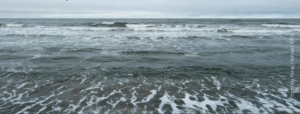We are pleased to share a new report, “Bering Science: Fall 2020 Bering Region Ocean Update – summer science highlights.” This report was developed by a team facilitated by a partnership between AOOS and the University of Alaska Fairbanks International Arctic Research Center (IARC). The team worked with agency and university scientists from across the region to compile information on recent research results and observations during this past summer in the Bering Sea.
This was a challenging year for conducting research in Alaska, with many surveys and projects delayed or cancelled due to the covid-19 pandemic. However, the report highlights other ways agencies were able to gather information, such as the survey of walleye pollock conducted by Saildrones (pg. 3), and phytoplankton estimation from satellite images. The report also gives updates on other research that was conducted, including research on tracking lost crab pots, satellite tagging of crab and bottom trawl surveys for crab.
Some of the notable observations shared in this report include: air temperatures that were warmer than the long-term average (pg. 2); a rapid retreat of the sea ice in March (pg. 2); continued observations of die-offs of seabirds, ice seals and gray whales; Unprecedented levels of paralytic shellfish toxins in shellfish collected along the Aleutian Islands and Alaska Peninsula (pg. 8), and a “marine debris event” in the Bering Strait (pg.8).

